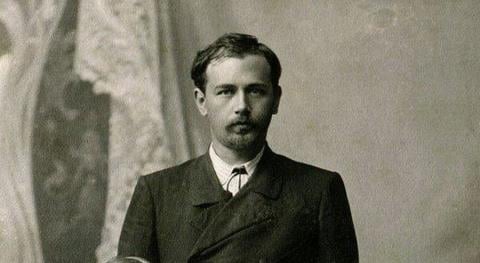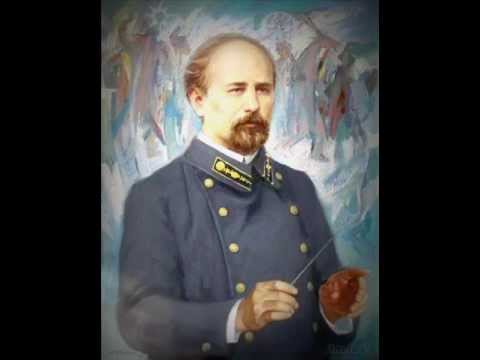Introduction
Mykola Leontovych, the Ukrainian composer and conductor, is best known for his deeply spiritual and folkloric works. Born in 1877, Leontovych’s music is rooted in Ukrainian folk traditions, infused with his passion for sacred choral music. Though his life was tragically cut short, his contributions to the world of music are enduring. This article explores five of his best-known compositions, each a masterpiece that showcases his unique ability to blend tradition with innovation.
1. Shchedryk (Carol of the Bells)
Perhaps the most recognizable of all Leontovych’s works, Shchedryk, commonly known as “Carol of the Bells,” is a festive staple around the world. This choral piece is based on a Ukrainian folk chant traditionally sung to celebrate the arrival of spring. It features a distinctive, repeating four-note motif that builds in complexity, creating a mesmerizing, bell-like effect.
Originally composed in 1916, the song has since been adapted and translated into multiple languages, becoming a Christmas classic globally. Its popularity can be attributed to its hypnotic rhythm and the way it captures the energy of the season, transcending language and culture.
Why it stands out: The simplicity of the melody, combined with the intricate harmonization, gives “Carol of the Bells” an enduring charm that has made it a timeless favorite across the globe.
2. Dudaryk
Dudaryk is one of Leontovych’s earlier works, composed for a male choir in 1908. This piece is based on a Ukrainian folk song about a wandering dudar (bagpiper) and his sad separation from his loved ones. The composer’s arrangement transforms the folk melody into a haunting choral composition that carries deep emotional resonance.
Leontovych’s treatment of “Dudaryk” elevates the simple folk tune into something much grander, using complex harmonies and layering voices to create a sense of longing and melancholy. The piece showcases his skill at crafting emotionally evocative music, even when working with traditional material.
Why it stands out: “Dudaryk” captures the beauty and melancholy of Ukrainian folk music while highlighting Leontovych’s gift for choral arrangement.
3. Oy Zazhulya Zazhulila (The Cuckoo Has Cooed)
This lesser-known gem, Oy Zazhulya Zazhulila, is a brilliant example of Leontovych’s ability to translate the richness of Ukrainian folk melodies into complex choral works. The piece is a spring song that features the cuckoo, a bird symbolic of renewal and hope in Ukrainian folklore. Leontovych’s arrangement is marked by its delicate harmonies, which mimic the sounds of nature and create a vivid pastoral atmosphere.
Though not as widely performed as some of his other works, “Oy Zazhulya Zazhulila” remains a favorite in Ukraine, particularly among choirs looking to explore more nuanced aspects of the composer’s oeuvre.
Why it stands out: The piece evokes the beauty of the natural world, using harmonies that echo the sounds of the forest and fields, making it a lyrical and evocative composition.
4. Pryidite, Poklonimsia (Come, Let Us Worship)
Leontovych’s sacred choral music is an important part of his legacy, and Pryidite, Poklonimsia (Come, Let Us Worship) stands out as one of his finest contributions to liturgical music. This piece is part of his “Liturgy of St. John Chrysostom,” composed for the Eastern Orthodox Church. The work combines traditional church chants with Leontovych’s own harmonic innovations, creating a piece that is both spiritually uplifting and musically sophisticated.
“Pryidite, Poklonimsia” demonstrates Leontovych’s deep understanding of Orthodox liturgical traditions, as well as his ability to breathe new life into them through his unique compositional style.
Why it stands out: This composition embodies the depth of Leontovych’s spirituality and his talent for creating music that resonates on both an emotional and religious level.
5. Schedryi Vechir (Generous Evening)
Another vibrant piece based on a Ukrainian New Year’s folk song, Schedryi Vechir (Generous Evening) is a lively, celebratory work. Unlike “Shchedryk,” which focuses on the arrival of spring, “Schedryi Vechir” is tied to the ancient tradition of Koliada, a Ukrainian ritual of blessing homes during the winter holidays.
Leontovych’s arrangement for this piece is energetic and full of joy, with a rhythmic drive that reflects the festive nature of the occasion. The piece uses a call-and-response structure, adding to its dynamic and participatory feel, making it a favorite for choral groups.
Why it stands out: “Schedryi Vechir” showcases Leontovych’s ability to capture the spirit of celebration in his music, blending folk rhythms with sophisticated choral arrangements.
Conclusion
Mykola Leontovych’s compositions are deeply rooted in Ukrainian culture and religious traditions, yet they transcend their origins to become universal expressions of beauty, faith, and emotion. Whether you are familiar with his famous “Carol of the Bells” or are exploring his lesser-known works, Leontovych’s music continues to inspire and captivate audiences worldwide. These five compositions are a testament to his genius, offering a glimpse into the mind of a composer who was able to turn folk melodies into timeless masterpieces.


Comments are closed